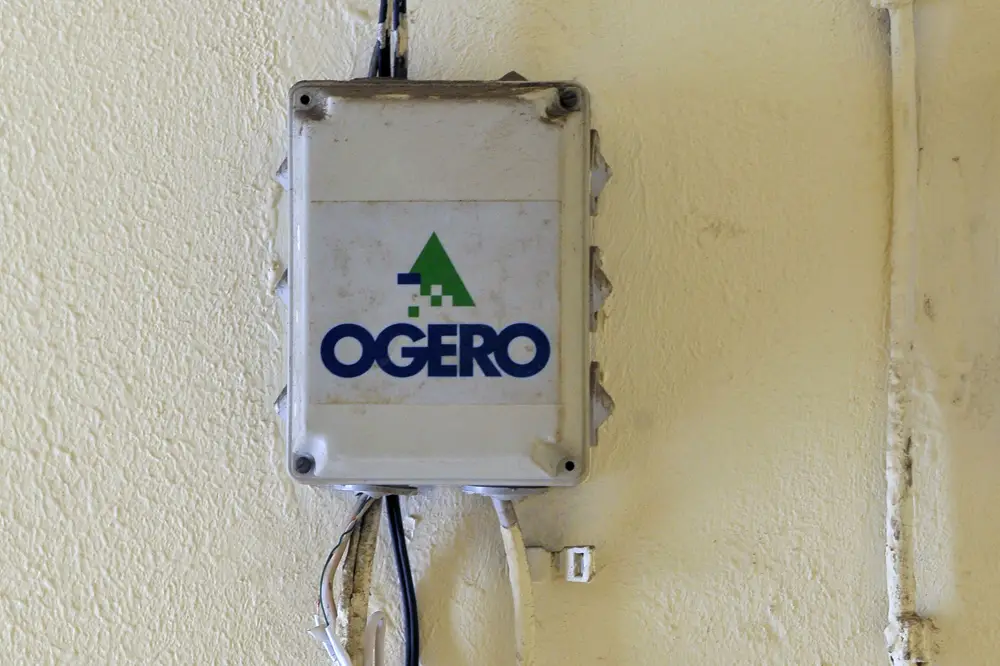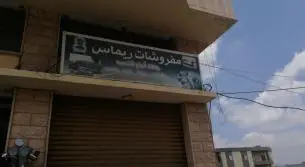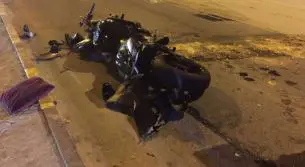
Four reasons Lebanon’s internet is so slow
Broadband in Lebanon faces layers of obstacles
Though Lebanon has a high international capacity coming in through underwater fiber optic cables — to the likes of several hundreds of megabits per second (Mbit/s) — internet speeds at the actual level of the user are overwhelmingly low. In Beirut, they average about 3.2 Mbit/s according to the Ookla Net Index for household downloads, calculated over a 30 day period ending March 18. This is not considered broadband by modern definitions, and pales in comparison to the global average of 22.3 Mbit/s, calculated over the same time frame.
But the problem is manifold: getting broadband internet in the country faces layers of obstacles. Here are four of the main reasons why internet speeds in Lebanon are suffering.
1. The brand new fiber optic network is not on
Lebanon’s newest fiber optic network, by all appearances, is completely switched off. The project was commissioned in 2011 by then Minister of Telecommunications Nicolas Sehnaoui and implemented by local civil works company Consolidated Engineering and Trading (CET) in partnership with international telecommunications company Alcatel–Lucent at a cost of $55 million.
This network connects the bulk of the central offices (COs) in the country as well as heavy users such as businesses, universities, hospitals, mobile operators and the army, with the newest generation of cables. This network, however, has not yet been approved for further development and use by the new administration under Sehnaoui’s successor Boutros Harb — and thus has yet to be switched on. The foggy reason given by advisors to the ministry is that there are mistakes made by contractors that are still in the process of being corrected.
That means we are still relying on older infrastructure to relay data traffic between COs and heavy users, which is mostly made out of copper, save for a small fiber optic loop connecting five COs including Adlieh, Jdeideh and Tripoli. However, according to Maroun Chammas, chair of internet service provider IDM, this network was built to handle Ogero’s billing and back office traffic and was never meant to act as the country’s backbone for internet traffic. The difference in speeds is quite pronounced. Fiber optic internet can go up to 100 Mbit/s, compared to copper, which is 8 Mbit/s at best, according to Ghassan Hasbani, CEO of consulting firm Graycoats, who adds that the limitations of copper become increasingly problematic the farther the user is from the CO.
When Executive spoke with CET in January, the company’s vice president, Dany El-Horr, explained that after the company delivered the project, having dug one million meters of trenches while Alcatel–Lucent laid down 4,000 kilometers of fiber optic cables, remaining work was forced to a halt when Sehnaoui left office and CET was barred from even entering the COs to test the signal strength of the equipment they had installed. “In most of the country, the cables were laid down, tested, accepted and handed over to the consultant. But in some parts, [such as] in the north, after the government [changed], we were banned from accessing the [COs] to finish our work,” he says.
When put to Walid Karam and Margo Moussy, two advisors to the minister of telecommunications, they confirmed that although the fiber optic cable and equipment has been for the most part installed, it has not been turned on — as in, there is no data traversing the cables in the ground linking the COs. Moussy claims that the new fiber optic infrastructure is not in use because it has not yet been accepted by the ministry.
Karam explains that CET made a number of errors laying the fiber in the ground, and the ministry now has to work with the company to fix the problems. He claims that in some cases, these were quite major problems due to technical specifications that weren’t respected, such as the amount of concrete cement above the cables in the ground, and these were being redone completely. Neither Karam nor Moussy, however, could specify exactly how much of the fiber needed work, nor could they determine exactly when the fiber optic network would be turned on.
These blips in some parts of the implementation, however, do not properly explain why the entire fiber optic network is off. In fact, serious questions remain as to why the operational part of the network, which would at least provide high speed internet to many businesses, universities, hospitals and administrations, has not been turned on. Moreover, the kinds of fixes that Karam and Moussy refer to could, by all logical deductions, be finished within a matter of weeks. The fact that we have not seen any results is puzzling at best.
2. The last mile
Even if the fiber optic backbone was switched on, the average internet user would not feel the difference
Switching on the new fiber optic network would make a great difference for some of the institutions that make up the economic backbone of our country. And while it is a crucial step, it is only a first step in giving access to broadband to all Lebanese citizens. While the fiber optic network installed by CET and Alcatel–Lucent connected the COs and heavy users, it does not connect the COs to the final leg of the telecommunication network: the average end user. These connections are still made through much slower copper infrastructure.
So even if the fiber optic backbone was switched on, the average internet user would not feel the difference.
But a plan is on the way, we are told. According to advisors Karam and Moussy, Minister of Telecommunications Boutros Harb is currently devising a plan for an FTTX project (fiber to the premises). But the project is still in the planning phase, as it had not yet been determined whether it would bring fiber to the home, to the building or to the curb. Moussy and Karam added that we should expect an announcement from the minister on this matter “soon.”
On the sidelines of a reception organized by the Ministry of Telecommunications for Open Innovation Week at the end of February, Harb confirmed to Executive that plans for a last mile project would be announced soon. This prospective announcement, however, has been overdue for at least several months now. Last December, Karam tweeted that Harb was to announce a fiber-to-the-curb project before the end of that year. It might not be unreasonable to venture that we might have to wait a little longer for the elusive announcement. Despite Executive’s repeated requests, Harb has failed to grant longer interviews for the past two months.
3. Bottleneck in the E1 lines
The next reason Lebanon’s internet is so slow is not related to infrastructure — or a lack thereof. Rather, a problem that would linger even if the shiny, state of the art fiber optic network was expanded to home users and was turned on, is an apparent obstruction in the distribution of international capacity to the private sector internet service providers (ISPs).
Lebanon does not lack in international capacity. The country’s three international exchanges in Beirut, Jdeideh and Tripoli are the gateways for international capacity to reach the country, connecting Lebanon to three underwater fiber optic cables. IMEWE cable connects Lebanon to India and various Middle Eastern destinations, as well as to Western Europe. Meanwhile, the Cadmos cable connects Lebanon to Pentaskhinos in Cyprus and the Berytar cable connects Lebanon to Tartous in Syria.
While Executive has not been able to confirm the exact amount of international capacity the country is receiving with either the ministry or Ogero, the state-run fixed line operator and guardian of the country’s telecommunication infrastructure, estimates from consultants and industry leaders peg the capacity at somewhere between 300 and 600 gigabits per second.
But a very small percentage of this is actually passed down to the private sector ISPs. Many internet ISPs have complained of a bottleneck at the level of distribution of international capacity.
Ogero, which also acts as an ISP, is in addition entrusted with leasing access to international capacity through E1 lines on behalf of the government. E1s are the units of capacity — 2.048 Mbit/s each — connecting the client to the CO. Even if there is physical fiber linking the ISP to a CO, the ISP must buy enough E1s to take advantage of faster speeds. While Ogero directly leases internet connections to end users, private sector ISPs buy from Ogero then resell the lines to end users.
Ogero could be leasing a lot more E1 lines than it is. When we spoke to Khaldoun Farhat, CEO of ISP Terranet, he claimed that ISPs are not getting the capacity they are requesting from Ogero. Farhat explained that Ogero wasn’t giving any more E1 lines because they are claiming that ISPs “have the capacity they need.”
While Executive was unable to get someone from Ogero to speak on the topic, the advisor to the minister of telecommunications, Karam, claims that one of the reasons Ogero is not granting the ISPs E1 lines is because they are reselling them illegally to Alpha, Touch, and illegal ISPs and DSPs. “They claim that they have x number of customers. Admin says this is the capacity that you need. When [they] need more, [they] have to prove that they need more private customers,” he says.
However, Farhat says that Ogero and the ministry are requesting that ISPs give a detailed list of their clients, full contact details, capacity sold and price. He claims that this is something that ISPs refuse to do, since Ogero competes with ISPs and is worried that this is a measure for the state run company to ‘poach’ their clients.
Ogero has, by the most conservative estimates, over 60 percent of the market for internet service provision
While Executive could not verify either claim, the outcome of this debacle has been to solidify Ogero’s position in the market as a competitor with ISPs. The lack of bandwidth has forced the ISPs to buy capacity from the private sector — such as via satellite, according to Farhat. This is more expensive, and makes it harder for the ISPs to compete with the market prices at which Ogero is selling. Ogero has, by the most conservative estimates, over 60 percent of the market for internet service provision.
Moreover, not getting enough E1 lines either prevents the private sector ISPs from expanding their network of customers, or, more likely, forces them to offer slower speeds for each customer as they stretch the maximum amount of people on the same line.
4. The high prices
Many ISPs will tell you that if a user wants a faster connection, they can get it — provided they are willing to pay for it. Many businesses in the country have slightly faster internet than in homes, though they often complain about the very high amount they pay for it.
The price of internet service is neither an outcome of market competition or of cost to the providers. Rather, the prices are set by the government and are linked to internet speeds, and every time the government wants to lower the price of the internet, they have to issue a decree, according to Mohamed Alem, managing partner at law firm Alem & Associates. That means a service provider cannot actually lower the price of the internet without a change in the tariffs applied to them.
If internet speeds went up overnight astronomically, then, we would still have to wait for the government to pass a decree to make the faster internet affordable, and in this way Lebanon is still at the mercy of the government. As Graycoats’ Hasbani puts it, “There’s no point having this capacity with an extremely expensive price to access it. No one will access it.”
...
..
.
لهذه الأسباب.. الإنترنت في لبنان "بـطـيـيـــــيء"
ترجمة: سارة عبد الله
..
بالرغم من امتلاك لبنان القدرة اللوجستية للحصول على إنترنت سريع كباقي الدول في العالم، ووجود كابلات للألياف الضوئية تحت الماء، والتي تمدّ مئات الميغابايت في الثانية، فإنّ سرعة الإنترنت لا تزال غير مستوفية للشروط العالميّة، ولا يزال لبنان يحتل المركز 175 من أصل 192 بلدًا من حيث سرعة الإنترنت.
وبحسب مؤشر "Ookla net"، فإنّ متوسط سرعة الإنترنت في بيروت يبلغ 3.2 ميغابايت في الثانية، ما يعدّ رقمًا غير مقبول مقارنةً بالمعدل العالمي 22.3 ميغابايت في الثانية.
أربعة أسباب
وهناك أربعة أسباب رئيسية وراء مشكلة السرعة في الإنترنت. ففي البداية، لم يتم تشغيل شبكة الألياف البصرية الحديثة بعد، والشبكة عبارة عن مشروع أطلقه وزير الإتصالات السابق نقولا صحناوي في 2011، وكلّف شركة الإتحاد للهندسة والتجارة "CET" تنفيذه بالتعاون مع شركة الإتصالات العالمية " Alcatel-Lucent" بكلفة 55 مليون دولار. وهذه الشبكة تصل المستخدم في المنزل أو الجامعة أو المستشفى وغير ذلك مباشرةً بالإنترنت دون وسيط. لكنّ عدم تشغيل هذه الشبكة يعني أننا سنبقى نعتمد على البنية التحتية القديمة باستثناء حلقة ألياف تربط 5 مكاتب أساسية بما في ذلك العدلية، الجديدة وطرابلس.
أمّا السبب الثاني، فهو أنه ولو وُضعت شبكة الألياف الضوئية حيز التنفيذ، فلن يشعر المستخدم العادي بالفرق، بل يحدث الفرق لدى المؤسسات التي تشكل العامود الإقتصادي للبلد.
وهناك مشروع "FTTX" أي توصيل الألياف الضوئية إلى المنازل مباشرة أو إلى أقرب نقطة منها، وضعه وزير الإتصالات بطرس حرب، لكنه ما زال في طور التخطيط، ويهدف المشروع لنقل لبنان من عصر الأسلاك النحاسية إلى عصر الألياف الضوئية. وكان حرب أعلن أنّ الشبكة الوطنية للألياف الضوئية، تصل في ميلها الأخير إلى المستهلك النهائي وأن الفريق المختص يدرس المعايير القانونية والتقنية قبل إطلاق المشروع.
السبب الثالث وهو غير مرتبط بالبنى التحتية، بل بتوزيع شبكة الإنترنت إلى عدد كبير من المستخدمين. فلبنان لا يعاني نقصًا مقارنةً مع القدرات العالمية، وتعدّ بيروت، الجديدة وطرابلس بوابات لوصل لبنان بثلاثة كابلات ضوئية تحت الماء. فهناك الكابل البحري "IMEWE" الذي يربط لبنان والهند وعدد من دول الشرق الأوسط إضافة إلى أوروبا الغربية. كذلك هناك كابل"Cadmos" بين لبنان وقبرص، وكابل "Berytar" الذي يصل لبنان بطرطوس في سوريا، لكن ولكي يصل الإنترنت إلى الموزعين ومن بعدها إلى المنازل، يمرّ في خطوط "E1"، وهذه الخطوط غير متوفرة بعدد كبير، فيصبح الإنترنت وكأنه يمر في عنق الزجاجة، لذلك كان موزعو خدمات الإنترنت قد طلبوا من وزارة الإتصالات استئجار خطوط اتصال رقمية دولية إضافية E1 لاستيعاب الطلب وتلبية الحاجة المتزايدة.
والسبب المادي لا بدّ أن يكون له دورًا في بطء الإنترنت، فعند احتياج خطوط إضافية لا بدّ من استئجارها ودفع تكلفتها، فإنّ مزودي الخدمات على استعداد لزيادة السرعة، لكن مقابل الحصول على أموال. وأكّد خبير قانوني أنّ سعر خدمة الإنترنت ليس تنافسيًا بل يوضع من قبل الحكومة وهي التي تتحكم بتخفيض السعر.
 الخيام | khiyam.com
الخيام | khiyam.com 











تعليقات: